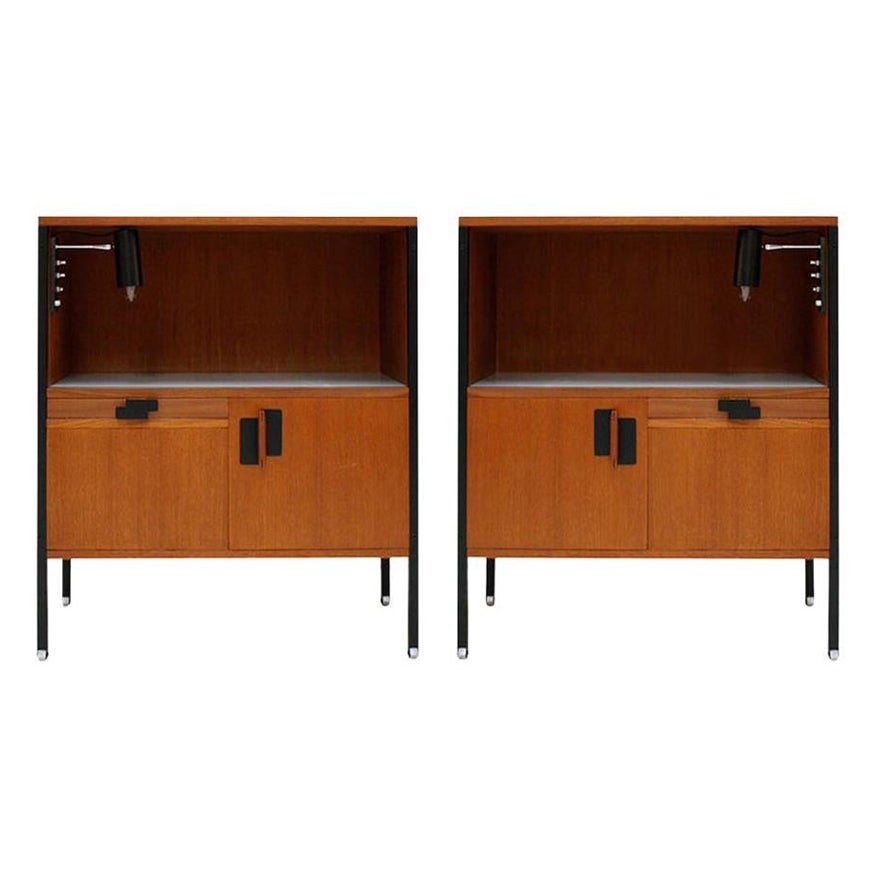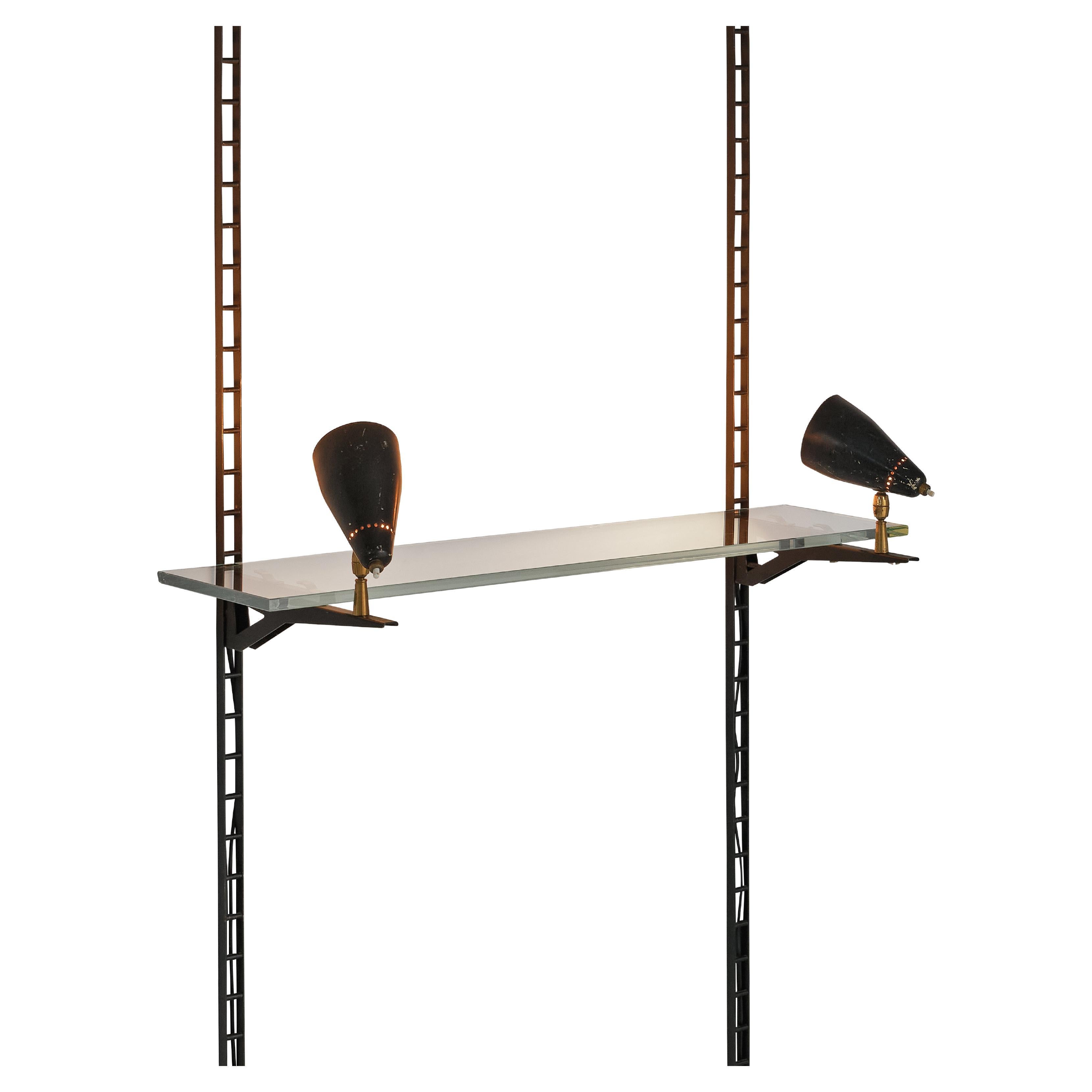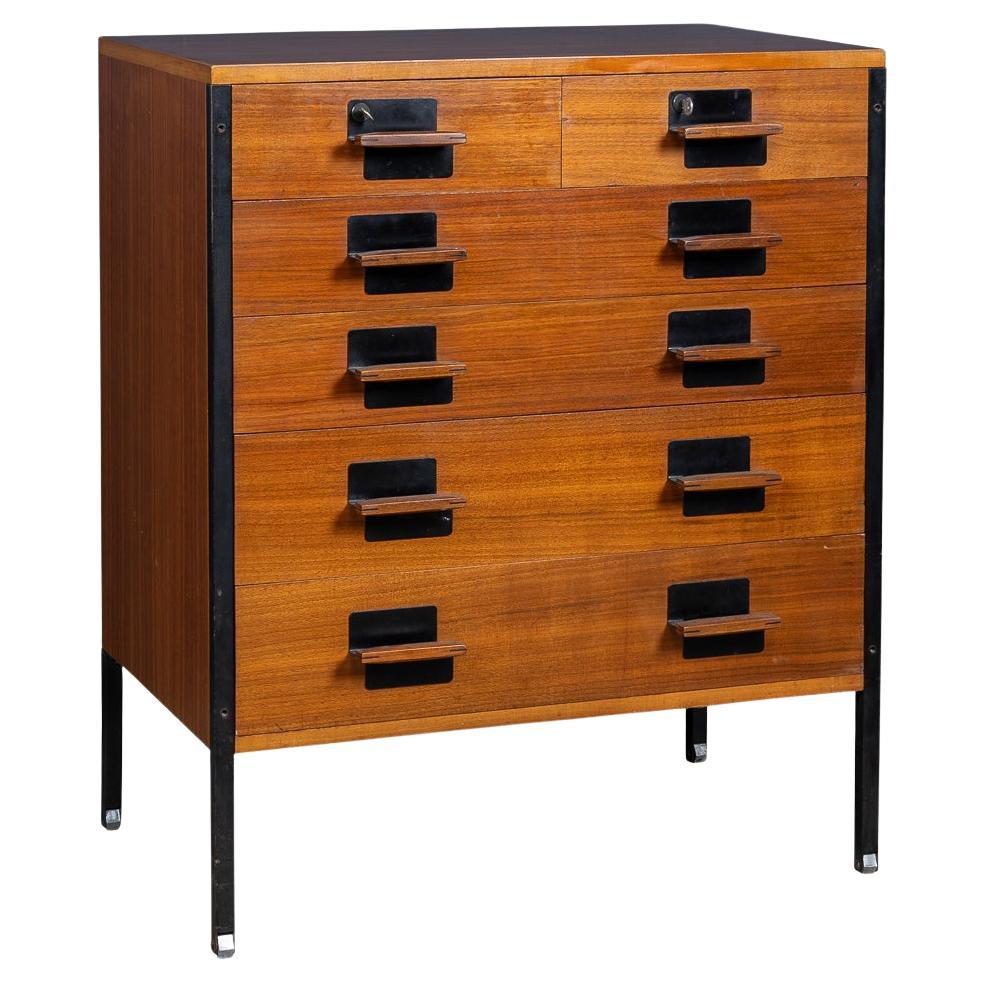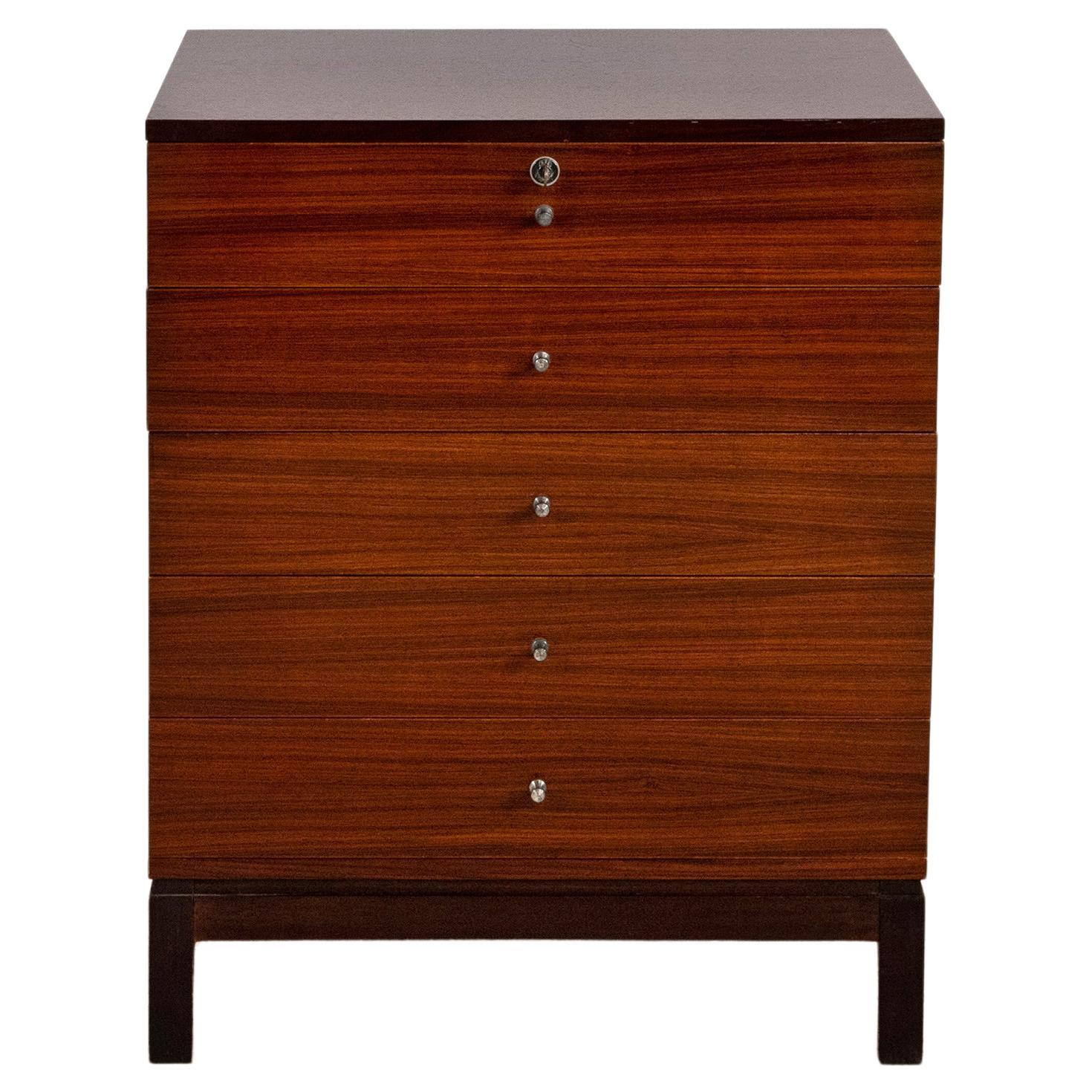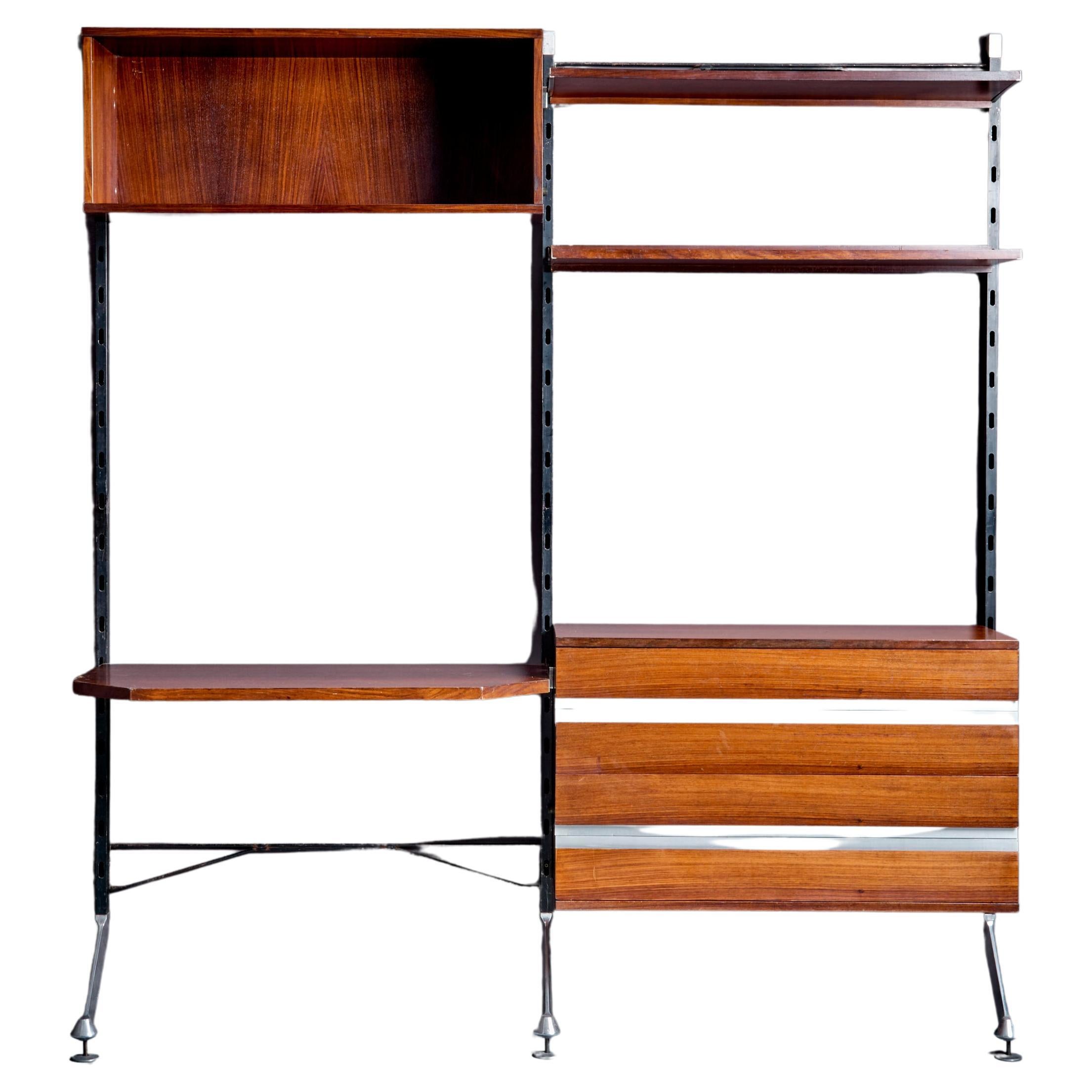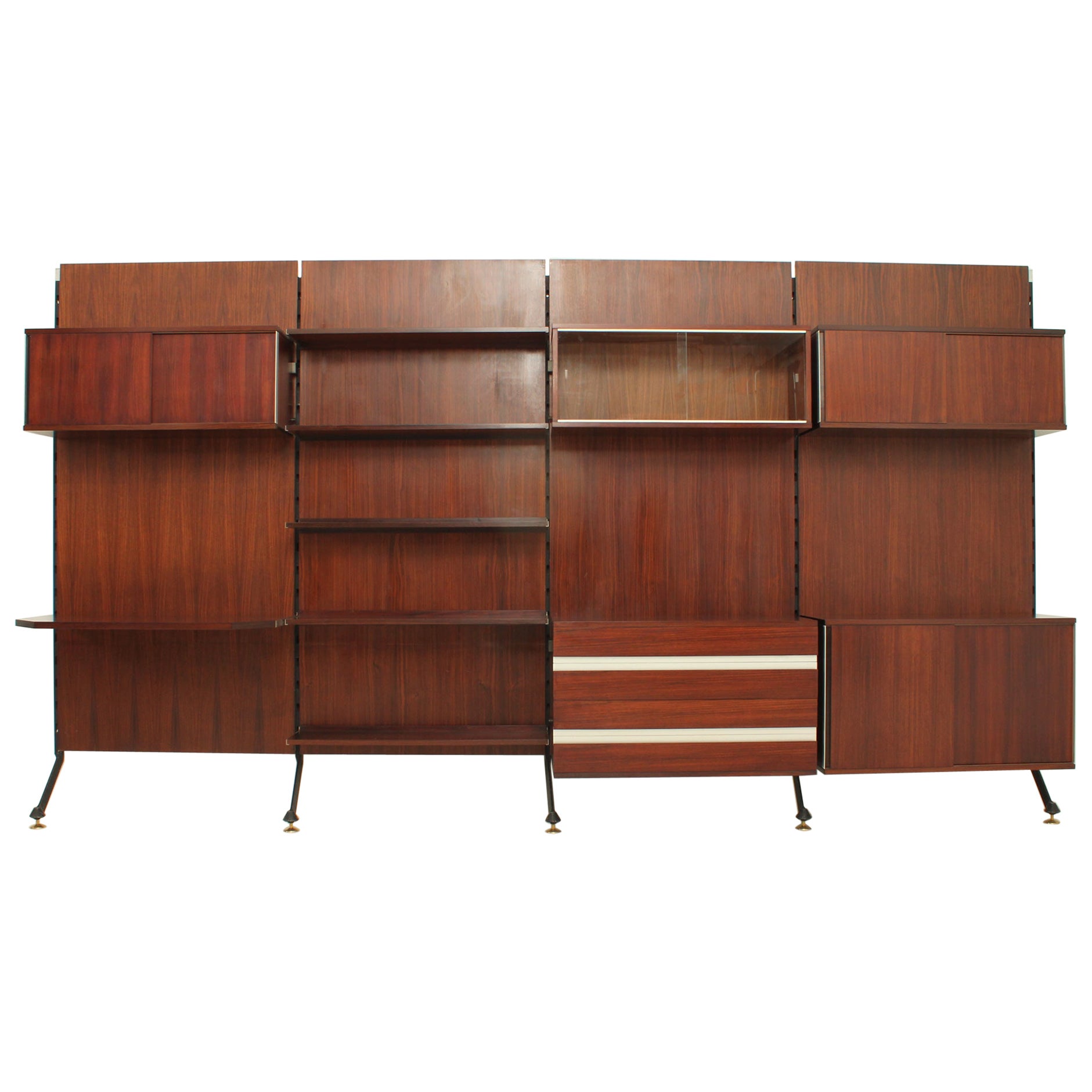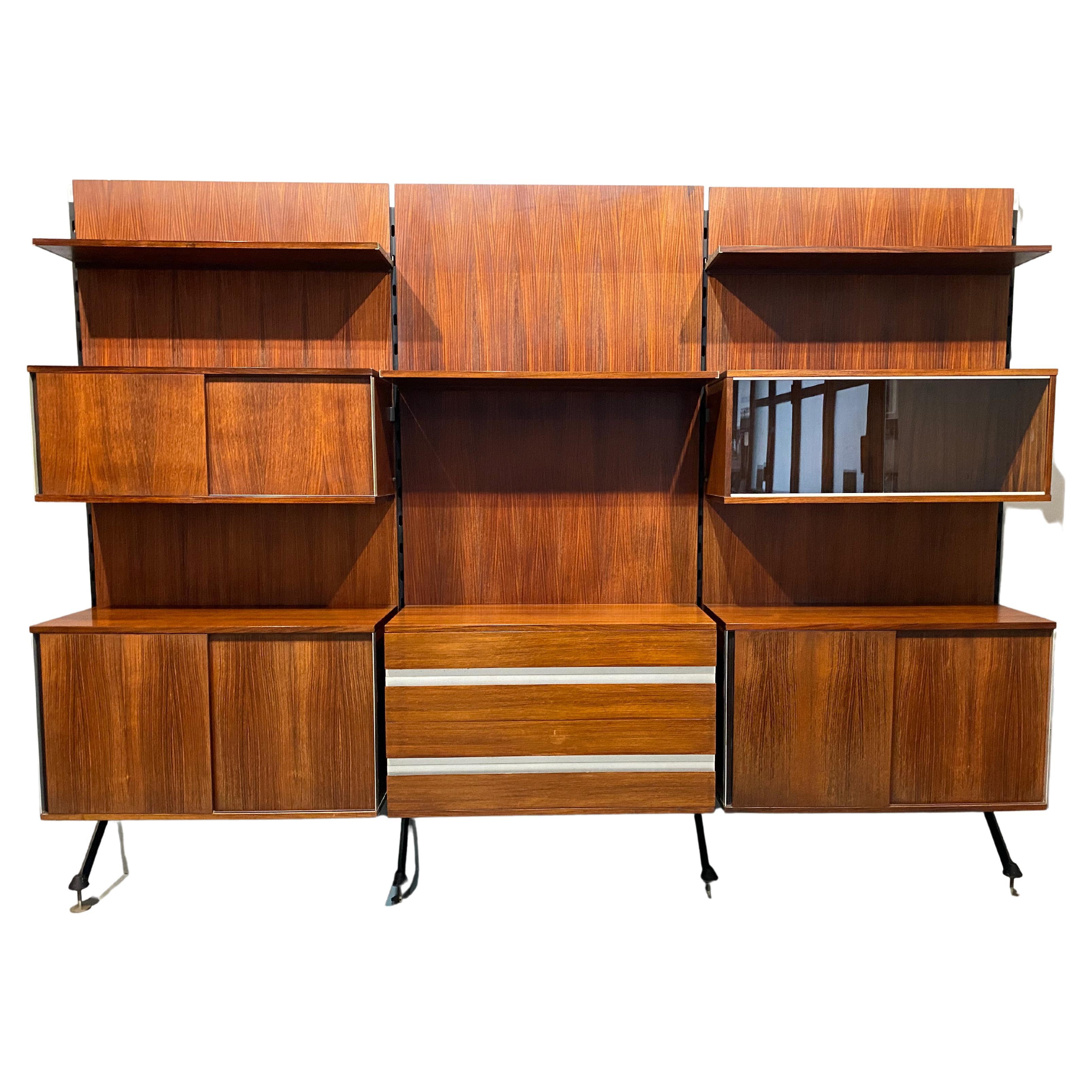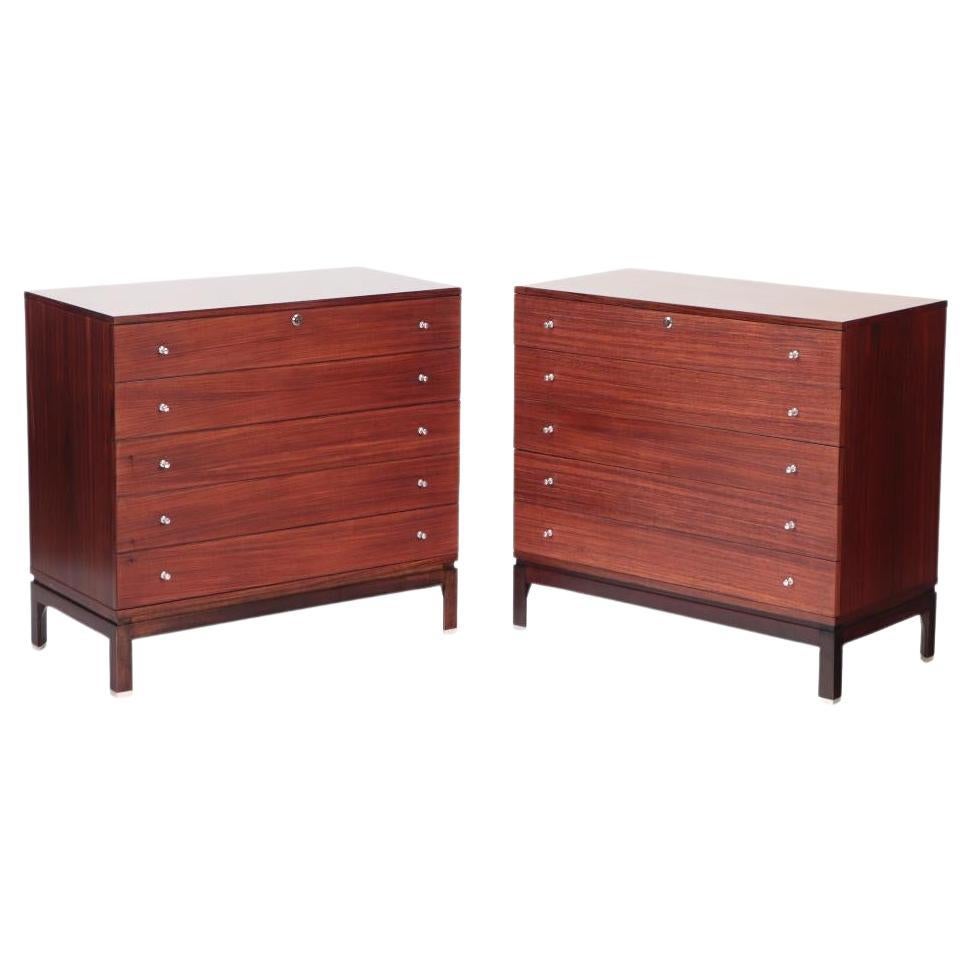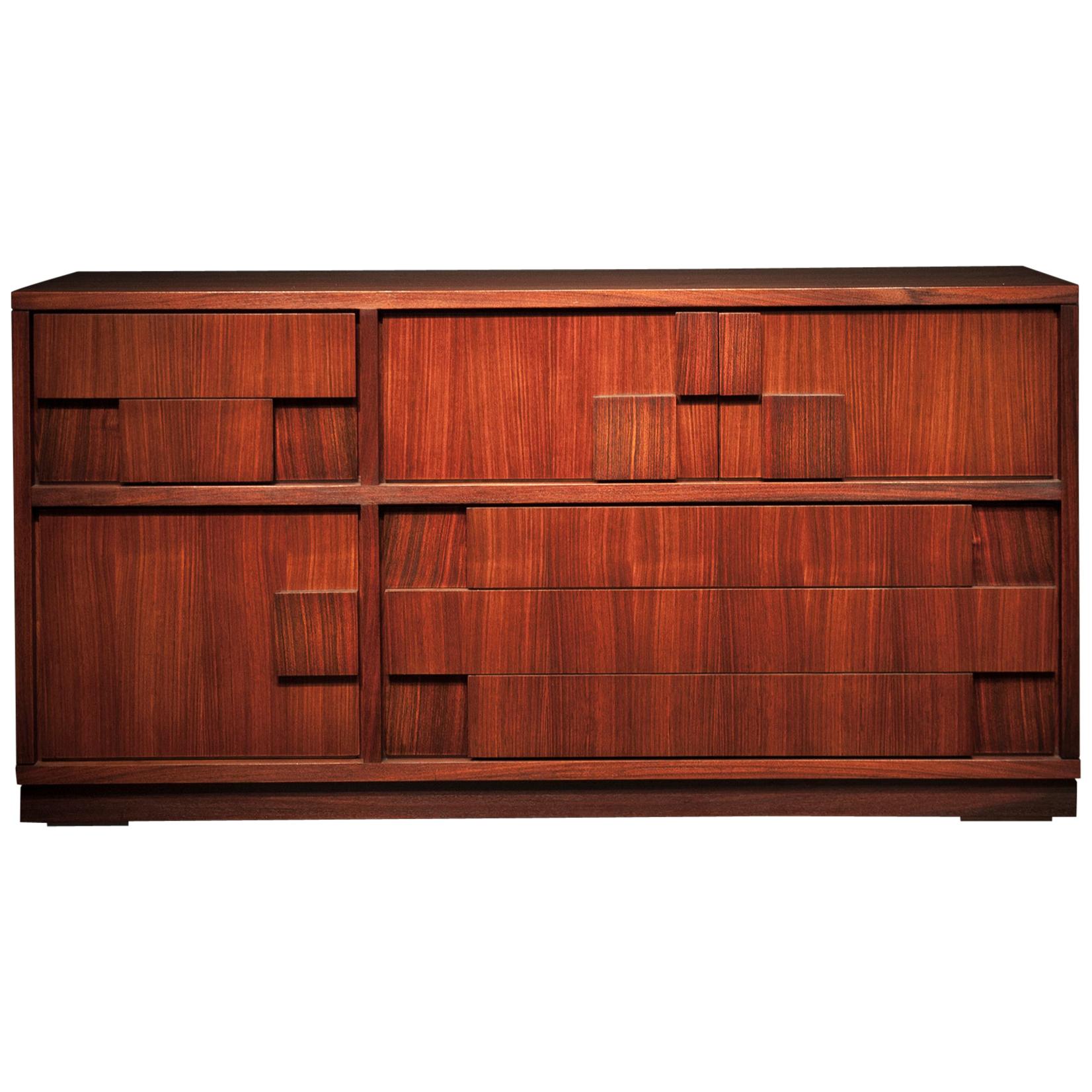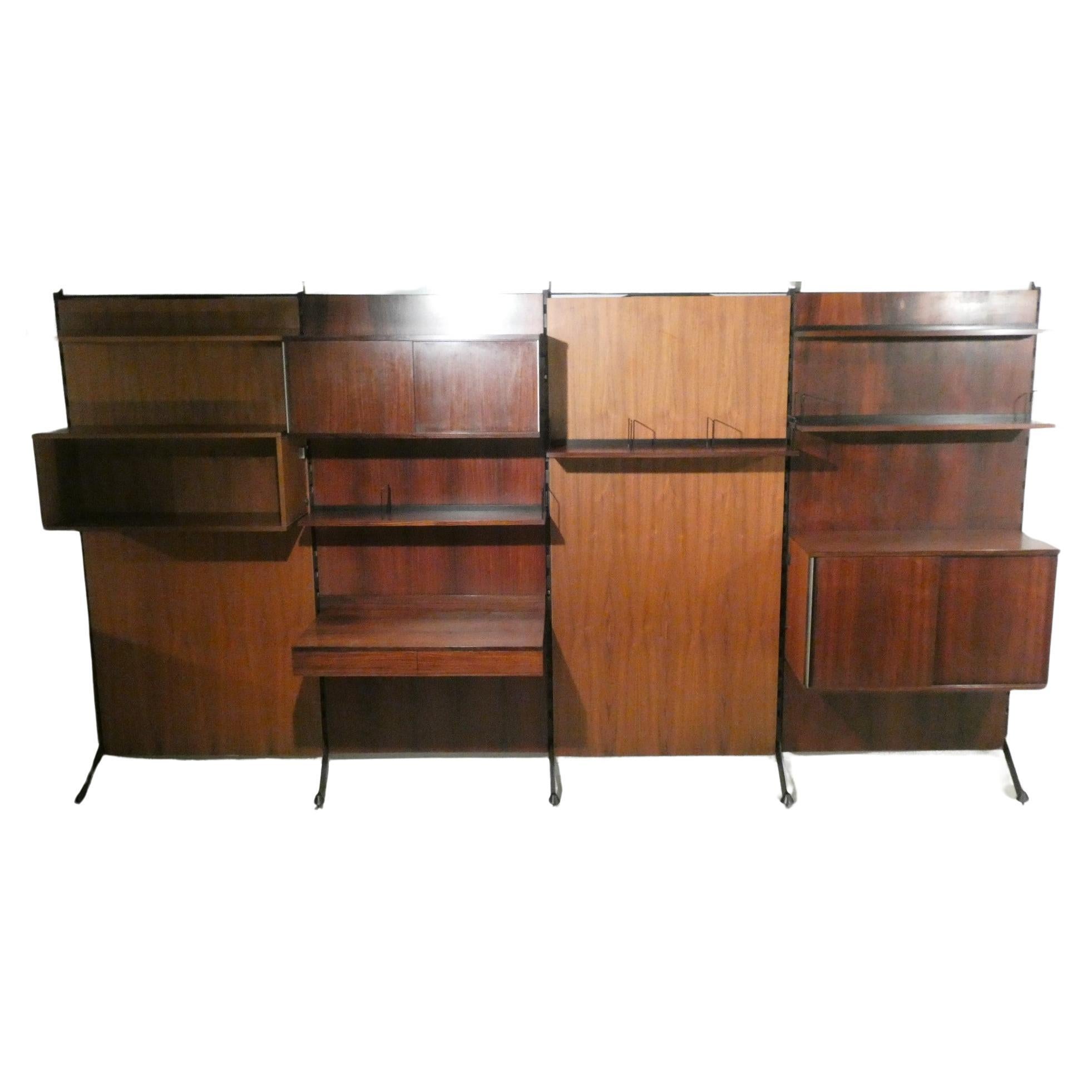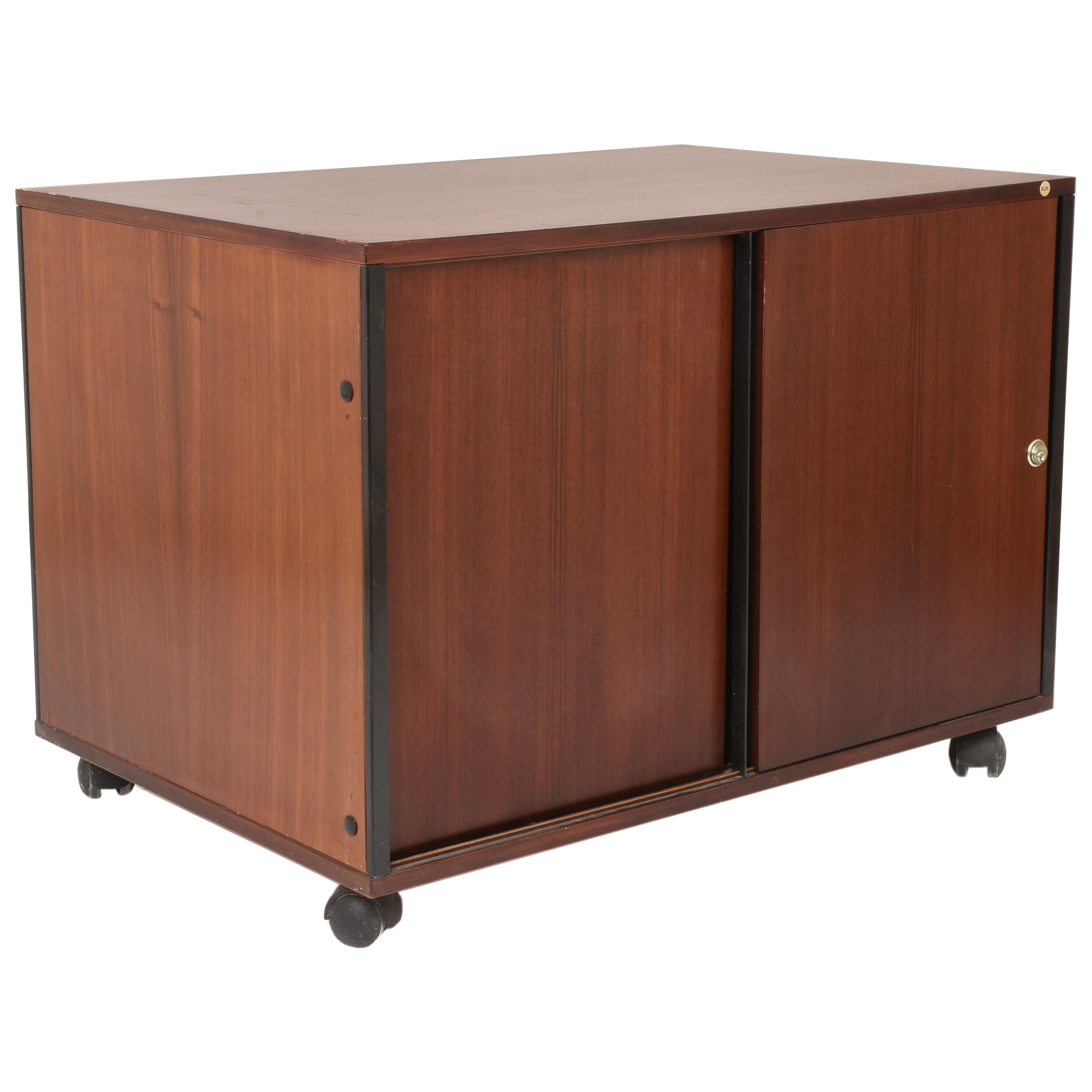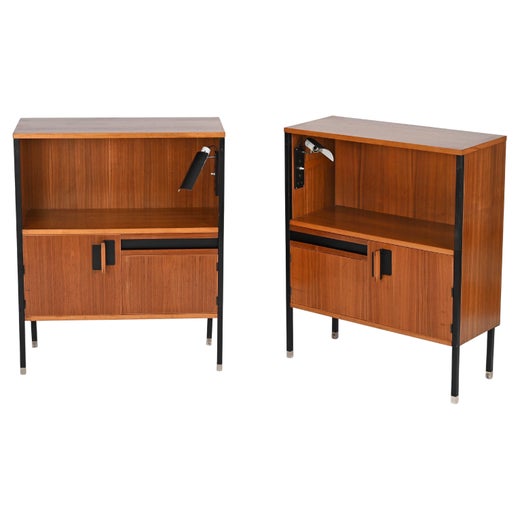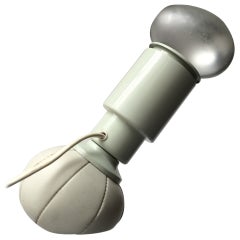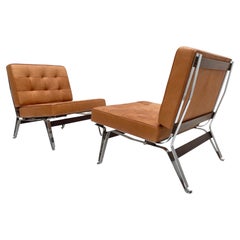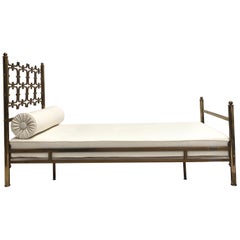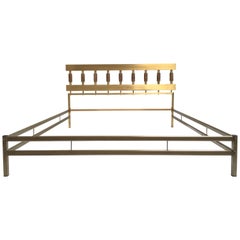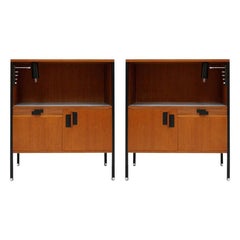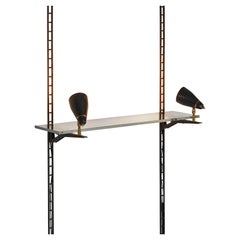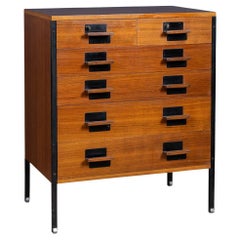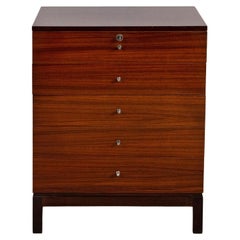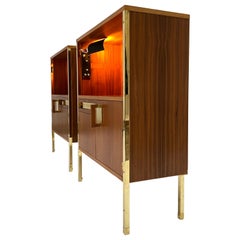
Illuminated Nightstands by Ico Parisi & Gino Sarfatti (Arteluce) for 'MIM', 1958
View Similar Items
Illuminated Nightstands by Ico Parisi & Gino Sarfatti (Arteluce) for 'MIM', 1958
About the Item
- Creator:
- Dimensions:Height: 34.85 in (88.5 cm)Width: 28.75 in (73 cm)Depth: 13.39 in (34 cm)
- Sold As:Set of 2
- Style:Mid-Century Modern (Of the Period)
- Materials and Techniques:
- Place of Origin:
- Period:
- Date of Manufacture:circa 1958-63
- Condition:Rewired: The appliques have been checked and rewired and the original built in power outlet has been disconnected, the top button is to click on the lamp, all the rest has been disabled for use as they were for the hotel room service intercoms etc. Repaired: A small hole in the back panel ,where the old electrical supply to the hotel intercom entered the cabinet, has been cosmetically restored, a few areas of minor user wear to one side .Detailed photo's and condition report are available upon request. Additions or alterations made to the original: The previously worn surface finish on the decorative metal parts and hardware have been recently replated in brass and are now in really nice shape . Wear consistent with age and use. Very nice original vintage examples in a very good condition with some user wear consistent with age and use.
- Seller Location:bergen op zoom, NL
- Reference Number:1stDibs: LU930122132752
Ico Parisi
Domenico “Ico” Parisi was one half of a prolific postwar design duo he comprised with his wife, Luisa. Their furniture designs are known for running the stylistic gamut, with celebrated mid-century modern pieces ranging from elegantly skeletal — like dramatic ebonized dining chairs — to plush and shapely, like the iconic 1951 Egg chair, in a plethora of materials.
The son of an art teacher father, Ico Parisi was exposed to art at an early age. Born in 1916 in the Sicilian capital of Palermo, he and his family moved to Como in 1925. There, the young Parisi would begin to develop his interest in architecture and design. After earning a degree as a building inspector in 1936 and working as a civil engineer, Parisi took on an apprenticeship in the studio of Giuseppe Terragni, the modernist, fascist Italian architect, pioneer of the Rationalist movement and creator of the iconic Casa del Fascio.
While working for Terragni, Parisi crossed paths with such contemporary design talents as Lucio Fontana, Bruno Munari and Pietro Lingeri, though he briefly moved away from design and architecture to explore photography and film. His artistic work would soon be interrupted, however, by the outbreak of World War II, during which he served at the front before returning to Como in 1943. There, he resumed work as a designer and architect, founding two architecture groups: the Alta Quota and the Gruppo Como.
Through his creative circles, Parisi met Luisa Aiani, a former student of the prolific architect and furniture designer Gio Ponti, who was affiliated with the Alta Quota. They married in 1947 and founded the studio La Ruota — a cross between a design firm and an intellectual salon — in Como shortly thereafter. In 1950, Parisi finally completed his architectural schooling, studying under the nationalist architect Alberto Sartoris at the Athenaeum Architecture School in Lausanne, Switzerland. He and Aiani began several decades of sophisticated output, designing curved sofas upholstered in yellow velvet and armchairs with slender mahogany frames for enduring Italian manufacturers such as Cassina and others.
Much like Charles and Ray Eames in America, the Parisis worked as a team and relied on experimentation in style and material for many of their designs. Ico Parisi died in Como in 1996.
Find a collection of vintage Ico Parisi coffee tables, dining chairs and more on 1stDibs.
Gino Sarfatti
That a spiky, futuristic chandelier named “Sputnik,” which was highly suggestive of the Soviet satellite of the same name, designed by an Italian engineer could predate the space age and the satellite’s launch by a few decades is the stuff of legend. But in 1939, Venetian-born Gino Sarfatti channeled his obsession with light and expert engineering skills into a design so bold it predicted the future. He would go on to design around 700 lighting products in his lifetime — each table lamp, wall light, pendant and chandelier superb and unorthodox in shape.
Sarfatti’s singular focus on creating opulent lighting designs that were rational in their use of resources makes him one of the most innovative lighting designers in history. He was studying to be an aeronautical engineer at the University of Genoa when his family’s financial troubles led him to drop out and move to Milan to help. During this time, he built a lamp for a friend using a coffee machine’s electric components and a glass vase. This exercise sparked his fascination with lighting, and he went on to found Arteluce in 1939. What followed was a period of working with skilled artisans and tinkering with materials instead of sketching. The self-taught designer soon established himself as a creator of provocative, sculptural luxury lighting. Through the company, he collaborated with some of the 20th century’s most influential designers, such as Vittoriano Viganò, who worked on Arteluce lighting between 1946 and 1960. In the 1950s and ’70s, Franco Albini, Franca Helg, Ico Parisi and Massimo Vignelli all contributed designs.
Sarfatti used resources mindfully and injected functionality into everything he designed. His light fixtures were lightweight, easy to take apart and reassemble and could be affordably repaired. This marriage of utilitarianism and glamour lent Sarfatti’s designs a clean, minimal yet arresting splendor, based on their graphical forms and construction.
After World War II, Sarfatti embraced new wiring technologies and materials like plexiglass, such as his 1972 project with Carlo Mollino that filled the Teatro Regio in Turin with hundreds of plexiglass pipes. In 1973, Sarfatti sold Arteluce to FLOS. His foresight, invention and fearlessness as a designer are revered to this day.
Find a collection of vintage Gino Sarfatti lighting now on 1stDibs.
More From This Seller
View AllVintage 1960s Italian Minimalist Table Lamps
Faux Leather
Vintage 1950s Italian Mid-Century Modern Lounge Chairs
Chrome, Steel
Vintage 1950s Italian Mid-Century Modern Beds and Bed Frames
Brass
Vintage 1970s Italian Mid-Century Modern Bedroom Sets
Metal, Aluminum, Bronze, Brass
Vintage 1960s Dutch Minimalist Night Stands
Formica, Teak, Plywood
1990s Dutch Minimalist Chairs
Birch, Plywood
You May Also Like
Vintage 1960s Italian Mid-Century Modern Night Stands
Metal
Vintage 1970s Italian Mid-Century Modern Shelves
Metal, Brass
20th Century Italian Other Cabinets
Metal
Vintage 1960s Italian Mid-Century Modern Commodes and Chests of Drawers
Metal
Vintage 1960s Italian Mid-Century Modern Shelves
Metal
Vintage 1950s Italian Mid-Century Modern Shelves
Metal, Aluminum
